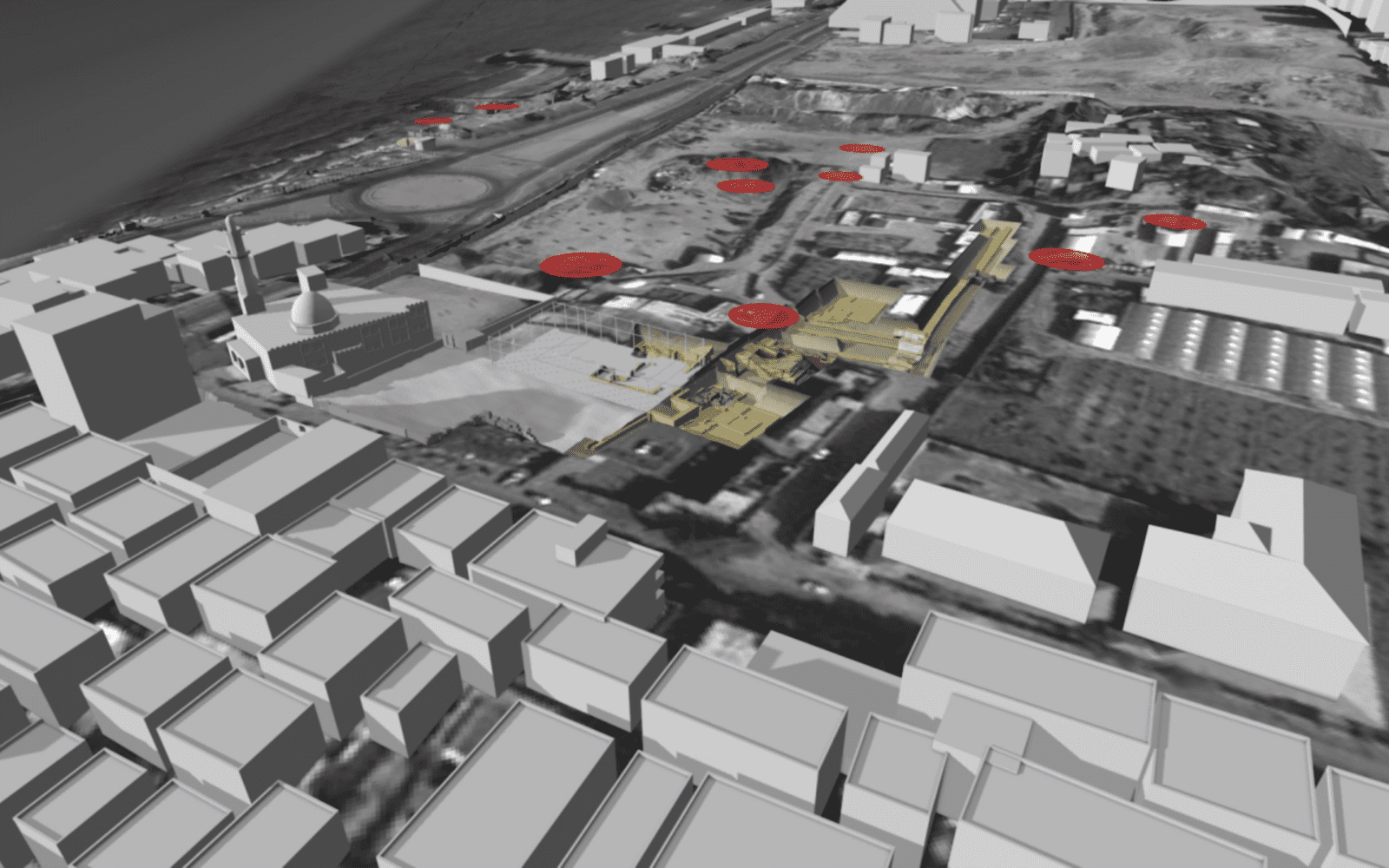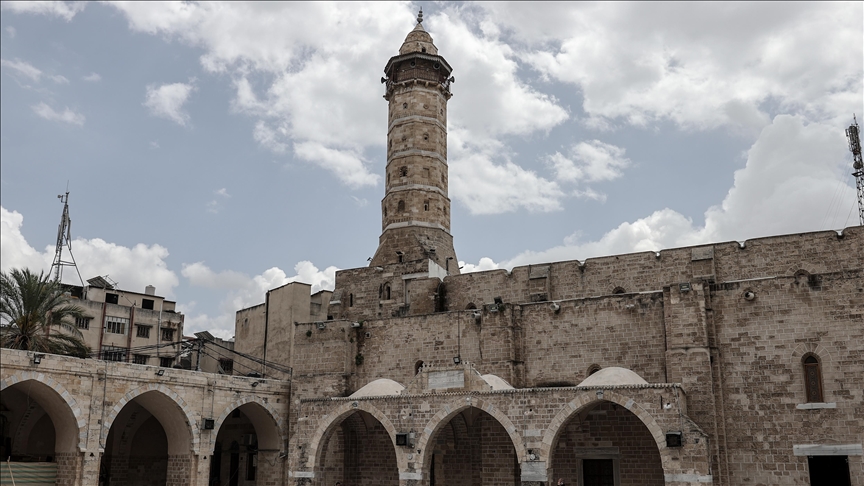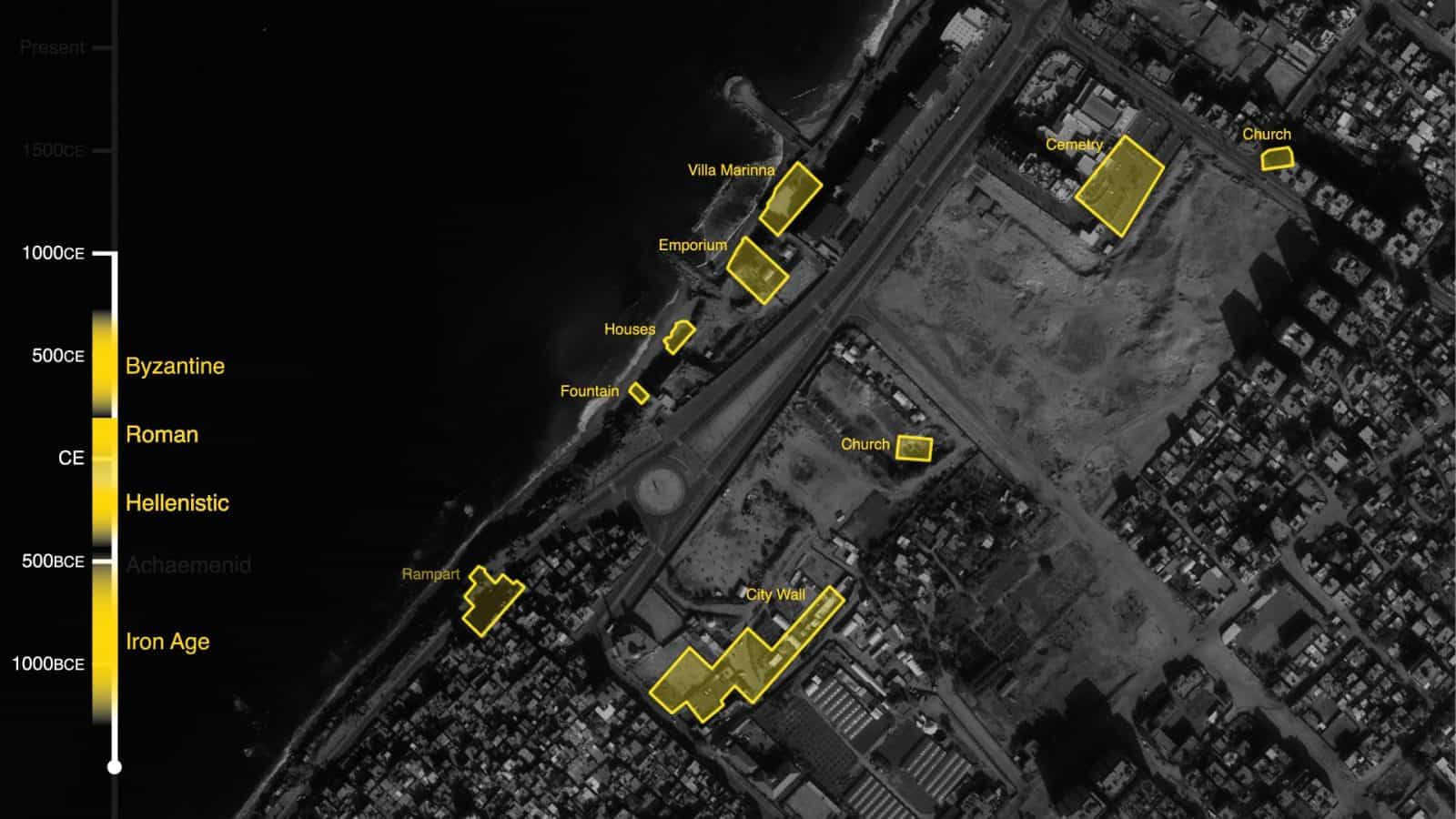
The ongoing war in Gaza has led to the widespread destruction of cultural heritage sites, reflecting a deeper attempt to erase Palestinian history.
In his 2016 book "Time and Remains of Palestine," British photographer James Morris documented the remnants of a rich yet fading cultural landscape. Through his images, Morris captured the absence of architectural monuments and the traces of history buried under the rubble in Palestine.
The strategic significance of Palestine, situated at the crossroads between Asia and Africa, has made it a melting pot of various civilizations. However, the visible emptiness, which stands in stark contrast to this history, signals a deliberate erasure tied to the Israeli settler movement.

One of the most poignant examples of this cultural erasure is Anthedon Harbour, Gaza’s ancient maritime port, which dates back to between 1100 B.C. and 800 B.C.
The systematic destruction of such sites highlights a campaign to deny the existence of a complex, multicultural history.
On Oct. 2023, a surprise attack by Hamas members breached the wall built by Israel inside Gaza, leading to a violent conflict. Following this, Israel declared a state of war, marking the first time since 1973.
Since then, the humanitarian crisis has overshadowed the cultural destruction, with over 41,000 people reported dead, including more than 14,000 children.
In April 2024, the United Nations Mine Action Service estimated that every square meter of Gaza affected by the conflict contains approximately 200 kilograms of rubble, indicating the scale of destruction.
Despite the humanitarian focus, the loss of cultural heritage has been significant. UNESCO, during its 42nd General Conference, emphasized that the true extent of the cultural devastation in Gaza remains unclear as efforts are concentrated on saving lives. Reports from UNESCO as of Sept. 17, 2024, confirm damage to 69 sites, including 10 religious buildings, 43 structures of historical interest, and several archaeological locations.

One notable site that has been reduced to rubble is the Great Mosque of Gaza, a historical symbol of resilience. The Church of Saint Porphyrius, Gaza’s oldest Christian church dating back to 1150, was also hit during the Israeli airstrikes.
While Israel left UNESCO in 2018, it is still bound by international conventions to protect cultural heritage. Under the 1954 Hague Convention, signatories must refrain from acts of hostility directed at cultural properties, even during armed conflicts.
However, despite these obligations, the continuous bombardment in Gaza has led to unprecedented levels of destruction.
The International Criminal Court has recognized that the destruction of cultural heritage can be linked to crimes against humanity. Independent reports have described the situation in Gaza as not just a humanitarian crisis but a form of "cultural genocide," where essential parts of Palestinian identity are systematically being erased.
In December 2023, the Republic of South Africa brought a case against Israel before the International Court of Justice, accusing it of violating the 1948 Convention on Genocide. South Africa’s claim includes evidence of the destruction of 318 Muslim and Christian places of worship, alongside other vital cultural and educational infrastructures.

Francesca Albanese, U.N. special rapporteur on human rights in the Palestinian territories, released a report on July 1, 2024, highlighting Israel’s portrayal of Gaza as a "military target." She argued that by labeling cultural and educational sites as military threats, Israel has justified their destruction, removing the distinction between civilian and military targets.

Satellite images from November 2023 revealed a troubling pattern, showing widespread craters in areas rich with archaeological significance, further proving the indiscriminate damage.
Albanese’s report emphasizes that Israel’s actions are not just a war strategy but a continuation of a colonial project aimed at erasing the Palestinian presence. By destroying cultural sites, the intention is to expel Palestinians from their lands and erase any traces of their history.
The destruction of Gaza’s cultural heritage is not only a loss to the Palestinian people but to the world. The international community must step up efforts to safeguard these cultural treasures, ensuring that the historical identity of Palestine is preserved for future generations.